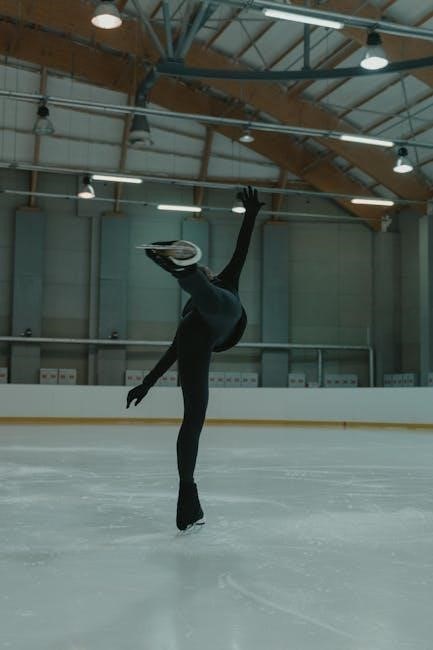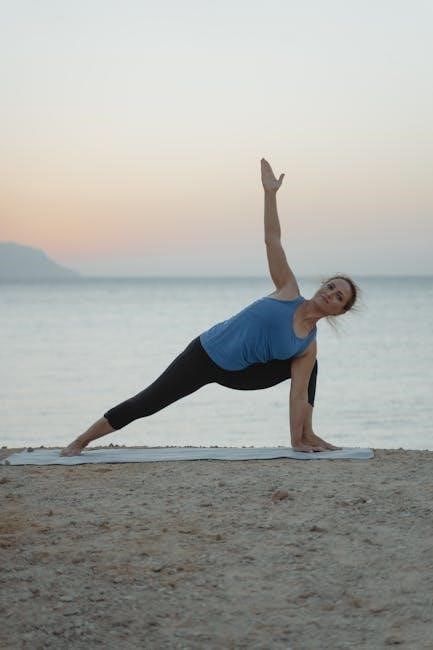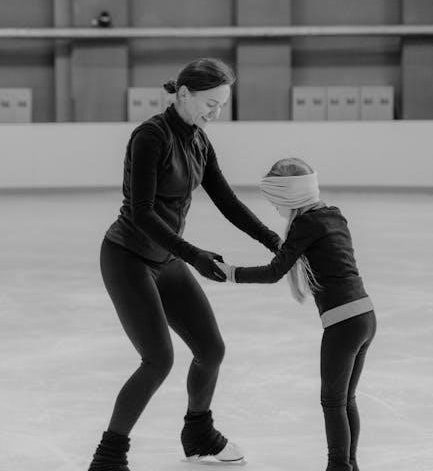Peroneal tendonitis is an inflammation of the peroneal tendons, causing pain on the outer ankle. Common in athletes, it can be acute or chronic. Proper management is crucial to prevent severe complications like tendon tears.
Understanding Peroneal Tendons and Their Function
The peroneal tendons are two tendons located on the outer side of the ankle, playing a crucial role in foot and ankle movement. They include the peroneus longus and peroneus brevis, which stabilize the ankle, support the foot during walking or running, and prevent excessive inversion. These tendons are essential for balance, posture, and proper gait mechanics. They are surrounded by a synovial sheath that reduces friction during movement. Their function is vital for athletic activities and daily mobility, making them prone to overuse and injury in active individuals.
Common Causes and Symptoms of Peroneal Tendonitis
Peroneal tendonitis often results from overuse, repetitive stress, or sudden increases in physical activity. It can also stem from poor foot mechanics, such as flat feet, or direct trauma. Common symptoms include pain along the outer ankle, swelling, and warmth. Activities like running or climbing stairs may worsen symptoms. In severe cases, a snapping sensation or tendon instability may occur. Early recognition of these signs is crucial to prevent progression to chronic tendonitis or tears, which require more intensive treatment.

Importance of Exercises in Peroneal Tendon Rehabilitation
Exercises play a key role in peroneal tendon rehabilitation by promoting healing, strengthening muscles, and restoring function. They help alleviate pain and prevent future injuries, making them a non-invasive yet crucial step in recovery.
How Exercises Promote Healing and Strengthening
Exercises enhance blood flow to the peroneal tendons, promoting tissue repair and reducing inflammation. Strengthening activities, such as resisted ankle exercises, improve muscle support, while stretching increases flexibility. By gradually loading the tendons, exercises stimulate collagen synthesis, fostering tendon strength and resilience. This structured approach helps restore function and prevents re-injury. Consistency in exercise routines ensures steady progress, minimizing the risk of chronic tendon issues and supporting long-term recovery.
Preventing Future Injuries Through Consistent Exercise
Regular exercise strengthens the peroneal tendons and surrounding muscles, reducing the risk of re-injury. Stretching improves flexibility, while strengthening exercises enhance muscle support and stability. Consistent routines promote tendon resilience, lowering the likelihood of chronic issues. By addressing muscle imbalances and improving ankle stability, exercises help prevent future complications. Continuing a structured exercise program, even after recovery, is essential for maintaining long-term tendon health and avoiding recurrence of peroneal tendonitis.

Types of Peroneal Tendon Exercises
Exercises include stretching for flexibility, strengthening to build muscle support, and functional movements for ankle stability, ensuring comprehensive tendon rehabilitation and injury prevention.
Stretching Exercises for Flexibility
Stretching exercises are essential for improving flexibility and reducing stiffness in the peroneal tendons. Common stretches include towel stretches, standing calf stretches, and seated stretches. These exercises help elongate the tendons and surrounding muscles, promoting blood flow and reducing tension. Start with gentle stretches, holding each for 20-30 seconds, and repeat 2-3 times daily. Avoid bouncing or forcing the stretch beyond a comfortable range. Consistent stretching can enhance ankle mobility and prevent tightness, which may contribute to tendon irritation or injury.
Strengthening Exercises for Muscle Support
Strengthening exercises are vital for supporting the peroneal tendons and improving muscle stability. Heel raises, step-ups, and resisted ankle exercises are commonly recommended. Using therapy bands provides resistance to strengthen the tendons and surrounding muscles. Start with low resistance and gradually increase as strength improves. Perform exercises like heel raises in sets of 10-15 repetitions, 2-3 times daily. These exercises help restore muscle balance, reduce tendon strain, and enhance overall ankle stability. Consistency is key to rebuilding strength and preventing future injuries.
Functional Exercises for Ankle Stability
Functional exercises focus on improving ankle stability and balance, crucial for daily activities and sports. Single-leg balances, wobble board exercises, and step exercises are effective. Start with single-leg stands, holding for 30 seconds, and progress to more dynamic movements. Use balance pads or BOSU balls to challenge stability. Step exercises involve stepping up and down carefully to strengthen the ankle complex. These exercises mimic real-life movements, enhancing proprioception and reducing injury risk. Gradually increase difficulty to build confidence and stability in the ankle joint.

Creating a Workout Plan for Peroneal Tendon Health
Start with low-intensity exercises, progress gradually, and incorporate stretching, strengthening, and balance drills. Tailor sets, reps, and frequency to individual needs for optimal recovery and stability.
Setting Realistic Goals and Progression
When creating a workout plan for peroneal tendon health, it’s essential to set realistic goals based on your current fitness level and injury severity. Start with low-intensity exercises like towel stretches and gentle resistance bands, ensuring you don’t exacerbate the injury. Progress gradually by increasing resistance or duration as pain subsides and strength improves. Avoid overloading the tendons too quickly, as this can lead to setbacks. Focus on consistent, manageable steps to rebuild flexibility, strength, and stability over time.
Progression should be guided by pain levels and functional improvement. If exercises cause sharp pain, it’s a sign to slow down or modify the routine. Incorporate a mix of stretching, strengthening, and balance exercises, adjusting sets and reps as tolerable. Aim to gradually restore normal ankle mobility and strength, ensuring the tendons can handle daily activities and sports without strain. Regular assessments and professional guidance can help tailor your progression safely and effectively.
Understanding Sets, Reps, and Frequency
For peroneal tendon exercises, sets, reps, and frequency are crucial for effective rehabilitation. Typically, 2-3 sets of 10-15 reps are recommended for strengthening exercises like heel raises or resistance band work. Stretching exercises, such as towel stretches, may involve holding for 30 seconds and repeating 2-3 times. Frequency depends on severity, with 2-3 sessions per day for acute cases and 3-4 times weekly for chronic management. Progress gradually, increasing reps or resistance as pain allows, ensuring consistent improvement without overloading the tendons. Always prioritize pain-free movement and adjust based on tolerance.

Safety and Pain Management During Exercises
Safety during peroneal exercises involves monitoring pain levels, avoiding sharp discomfort, and adjusting routines accordingly. Proper use of therapy bands and resistance tools is essential to prevent further injury.
Recognizing Pain Levels and When to Stop
Recognizing pain levels is crucial during peroneal tendon exercises. Mild discomfort is normal, but sharp or stabbing pain indicates overexertion. Stop immediately if pain worsens or persists after rest. Pain exceeding a 5/10 intensity suggests potential harm. Swelling, bruising, or limited mobility are red flags. Always prioritize tendon health by avoiding exercises that cause significant discomfort. If pain persists or worsens, consult a healthcare provider to avoid further injury and ensure proper healing.
Using Therapy Bands and Resistance Tools Safely
Therapy bands and resistance tools are essential for peroneal tendon rehabilitation but must be used cautiously. Start with low resistance to avoid overexertion. Ensure proper form and technique to prevent strain. Stop immediately if pain occurs. Anchor bands securely to avoid snap-back injuries. Avoid jerky movements and focus on smooth, controlled actions. Inspect equipment for wear and tear before use. Gradually increase resistance as strength improves, and always warm up before exercises. Consult a professional if unsure about proper usage or progression.
Scientific Evidence Supporting Exercise Protocols
Scientific studies and orthopedic specialists endorse exercise protocols for peroneal tendonitis, emphasizing their effectiveness in promoting healing and preventing future injuries safely.
Studies on Exercise Effectiveness for Peroneal Tendons
Studies highlight the effectiveness of targeted exercises in treating peroneal tendonitis. Research from 1987 to 2016 shows that strengthening and stretching exercises improve tendon function and reduce pain. Specific exercises, such as towel stretches, standing calf stretches, and heel raises, are proven to enhance flexibility and strength. Experts recommend avoiding pain during exercises to prevent further damage. These protocols, supported by scientific evidence, demonstrate significant improvements in tendon health and long-term injury prevention when consistently applied.
Expert Recommendations from Orthopedic Specialists
Orthopedic specialists emphasize the importance of targeted exercises for peroneal tendon health. They recommend starting with gentle stretches, such as towel stretches and calf stretches, to improve flexibility. Strengthening exercises, like heel raises and step-ups, are also crucial for muscle support. Experts advise avoiding exercises that cause pain and using therapy bands safely. Progression should be gradual, with regular monitoring of symptoms. Consulting a professional for personalized plans is highly recommended to ensure safe and effective rehabilitation.
Consistency in exercises and professional guidance are key for effective peroneal tendon rehabilitation. Downloading a comprehensive exercise guide ensures a structured approach to recovery and long-term tendon health.
Importance of Consistency and Professional Guidance
Consistency in performing peroneal tendon exercises is essential for promoting healing and preventing future injuries. A structured routine helps strengthen the tendons and improves ankle stability. Professional guidance ensures exercises are performed safely and effectively, minimizing the risk of aggravating the condition. Working with a physical therapist or orthopedic specialist allows for personalized treatment plans tailored to individual needs. This oversight is critical for achieving optimal recovery and restoring normal function. Regular monitoring and adjustments to the exercise program are vital for long-term success.
Additionally, professional guidance helps identify potential issues early, such as improper form or overexertion, which could lead to further damage. Experts can also recommend appropriate therapy tools, like resistance bands, to enhance the effectiveness of exercises. By combining consistency with professional oversight, individuals can achieve a full recovery and return to their active lifestyle confidently. This collaborative approach ensures a comprehensive and sustainable rehabilitation process for peroneal tendon health.
Downloading a Comprehensive Exercise Guide (PDF)
Downloading a PDF guide for peroneal tendon exercises provides a structured and accessible resource for rehabilitation. These guides typically include detailed instructions, images, and progress tracking. They often cover essential stretches, strengthening exercises, and functional movements tailored to different recovery stages. Many PDF guides are designed by orthopedic specialists and physical therapists, ensuring evidence-based and safe practices. By downloading such a guide, individuals can follow a clear, personalized plan to enhance recovery and prevent future injuries. This resource is invaluable for maintaining consistency and achieving optimal outcomes in peroneal tendon health.




